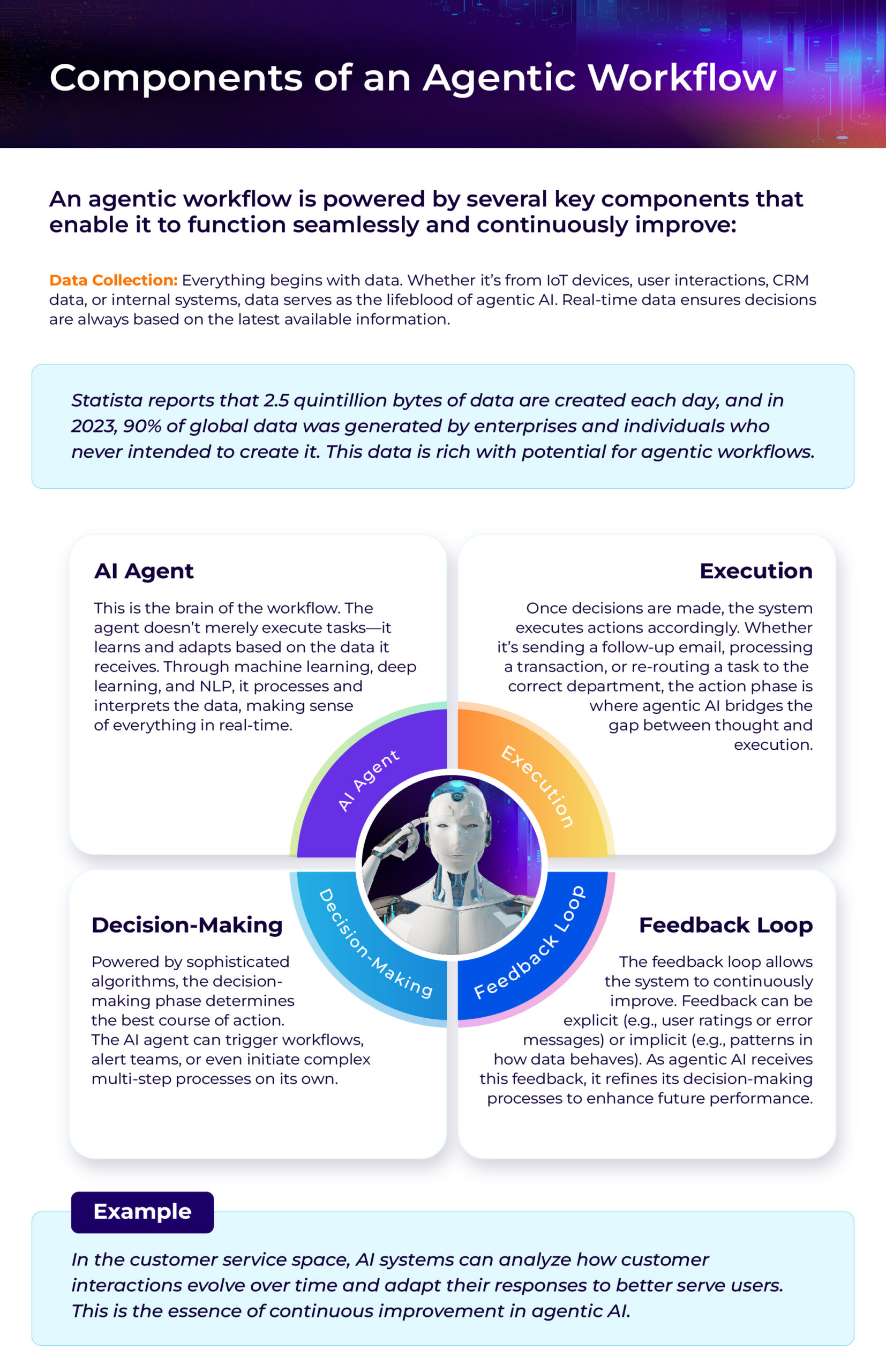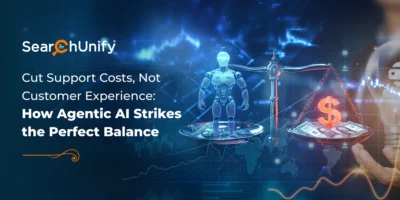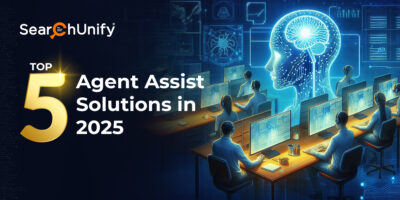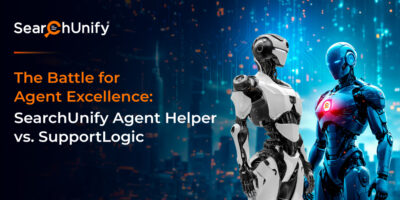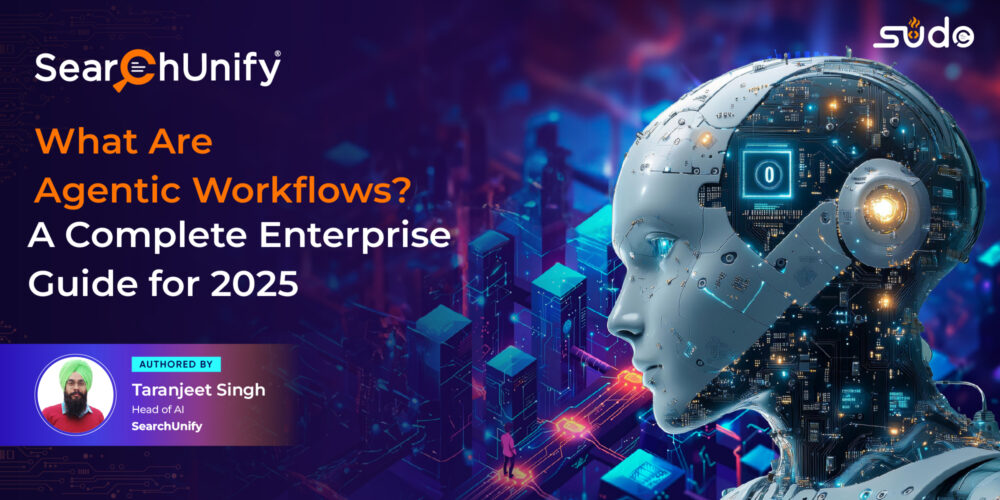
A world where teams don’t just react to issues but anticipate and resolve them before they escalate. Agentic workflows make this a reality by enabling AI-driven systems to work autonomously, adapt in real time, and streamline enterprise operations. In 2025, enterprises – from customer support to IT and HR – are embracing these intelligent workflows to boost efficiency, reduce bottlenecks, and deliver seamless experiences.
This is where AI comes in. Artificial intelligence has already transformed several industries, and now, it’s making its mark in customer support with Agentic AI.
Agentic AI workflows empower businesses to provide faster, more efficient customer service and drive personalized experiences and cost savings.
But what exactly are these workflows, and how can they enhance customer support operations?
Introducing Agentic AI Workflows
Agentic AI workflows are intelligent systems where AI agents autonomously handle tasks by analyzing context and real-time data. Unlike traditional tools that rely on human input, these agents actively make decisions, learn from interactions, and adapt to changing scenarios.
Imagine a customer contacts support about a failed payment. Here Agentic AI:
1. Identifies the issue from the message.
2. Analyzes the customer’s recent transactions and payment history.
3. Flags potential errors provide step-by-step troubleshooting or retry the payment autonomously.
4. Escalates to a human agent with a detailed summary if needed.
This workflow ensures faster resolutions, reduces manual effort, and delivers seamless customer experiences.
In short, what are agentic workflows?
Agentic Workflows = Dynamic Task Execution + AI Agent Orchestration + End-to-End Process Automation
Agentic workflows transform static processes into dynamic, intelligent systems driven by adaptable AI agents.
Before we proceed, let’s discuss how agentic and traditional workflows are different from each other.
Difference Between Agentic Workflows and Traditional Workflows
| Aspect | Agentic Workflows | Traditional Workflows |
| Adaptability | Flexible and responsive to real-time changes; capable of quick decision-making. | Rigid and linear; relies on predefined rules and processes. |
| Decision-Making | Powered by AI to make autonomous, context-aware decisions. | Requires human intervention for nuanced or in-the-moment decision-making. |
| Efficiency | Continuously learns and improves through feedback, optimizing task execution. | Limited efficiency due to repetitive manual adjustments and fixed automation capabilities. |
| Technology Utilized | Employs AI technologies like LLMs, machine learning, and NLP for contextual insights. | Relies on basic automation tools like RPA with fixed rule-based operations. |
| Complexity Handling | Excels in managing unpredictable and multifaceted tasks. | Struggles with handling tasks beyond simple, repetitive processes. |
| Resource Utilization | Frees up human workers for strategic, creative tasks. | Consumes significant human resources for routine, repetitive processes. |
| Scalability | Easily scales with changing business needs and volumes. | Limited scalability due to reliance on manual intervention and rigid systems. |
Now that the difference is clear, let’s understand more about the components of Agentic Workflow.
Understanding The Role of Data in Agentic Workflows
At the heart of every agentic AI workflow is data. Its role is pivotal—it’s not just about feeding data to the system but ensuring the data is high-quality, relevant, and actionable in real time.
- Real-Time Data Utilization: The ability to collect and analyze data in real-time gives agentic workflows a significant edge over traditional, static workflows. Real-time data enables AI systems to respond to changes almost instantly, adjusting actions and decisions as the situation evolves.
- Data as the Catalyst for Adaptation: Agentic AI continuously ingests new data, learning from every interaction and outcome. This makes the system more intelligent and efficient over time. For example, in a customer service workflow, AI might initially suggest a generic response to a customer inquiry. But as it gathers more information and feedback, it learns to personalize the response, improving the customer experience.
According to Forrester, businesses that leverage real-time data have a 23% higher chance of improving customer satisfaction and a 20% increase in operational efficiency.
- Feedback-Informed Decisions: Data also imparts feedback loops. Whether it’s through user feedback, operational performance metrics, or even external market conditions, real-time data helps agentic AI refine its decision-making process and optimize the workflow.
A Gartner report predicts that by 2027, 75% of B2B enterprises will rely on real-time data and AI-driven workflows to manage customer relationships more effectively. The future is clear: without real-time data, workflows will struggle to stay competitive.
How Do Agentic AI Workflows Work in Customer Support?
At the heart of agentic AI workflows is the ability of AI agents to seamlessly integrate with existing customer support tools and systems. Here’s how it works:
- Data Integration and AI Training: AI agents are trained on historical customer interaction data, knowledge bases, and product information. They integrate with CRMs, support platforms, and even live chat tools to access real-time customer data.
- Decision-Making and Task Automation: Once trained, the AI agent uses this data to make decisions. For example, when a customer asks about a product feature, the agent can pull up the most relevant information, suggest troubleshooting steps, and even escalate issues if necessary. With LLMs (Large Language Models) and Natural Language Processing (NLP), these agents can handle complex queries with impressive accuracy.
- Continuous Improvement: AI agents constantly improve by learning from every interaction. Feedback loops within the workflow allow the agents to enhance their decision-making and further personalize responses over time. This learning process enables more efficient handling of increasingly complex queries.
Quick Fact: Zendesk leverages AI-driven chatbots to scale operations efficiently, enabling 30-50% cost reductions in customer service while enhancing response times and service quality.
Here’s Why Agentic AI Workflows Are the Future of Customer Support
1. Enhanced Efficiency and Faster Resolutions
AI agents built with agentic workflows can handle a variety of tasks, including ticket creation, knowledge base searches, and issue resolution, all without requiring human intervention. This drastically reduces response time, often offering instant solutions for customers, available 24/7. As a result, businesses see improved First Contact Resolution (FCR) rates, with 73% of customers expecting to resolve their issues on the first contact.
2. Cost Reduction and Scalability
AI agents can handle hundreds of requests simultaneously, making them far more cost-effective than human agents. For businesses, this means scalability without the need for massive increases in staffing. This automation can help businesses save significant operational costs while ensuring that agents focus on higher-priority issues.
3. Context-Aware and Proactive Support
One of the core benefits of agentic workflows is the ability to handle not just reactive support, but proactive support. AI agents can analyze historical data and predict customer needs before they arise, offering solutions before the customer even asks. For instance, AI-driven customer service platforms can flag common issues or detect patterns in customer behavior, automatically reaching out with a solution or preventative action. This proactive approach can significantly enhance customer satisfaction and reduce churn.
In short, to stay ahead of the competition, enterprises must:
- Invest in Modular Architectures: Flexible systems that allow AI agents to integrate seamlessly with existing tools.
- Prioritize Data Quality: High-quality data is the foundation for effective AI decision-making.
- Adopt a Continuous Improvement Mindset: Regularly update AI models and workflows based on feedback and evolving business needs.
Key Technologies Behind Agentic Workflows
Agentic workflows are transforming the game today – streamlining processes, automating repetitive tasks, and elevating customer experiences. At the heart of these intelligent systems lie four transformative technologies: Artificial Intelligence (AI), Natural Language Processing (NLP), Machine Learning (ML), and Data Analytics. Let’s dive into how they power this revolution.
Artificial Intelligence (AI)
Artificial Intelligence (AI) serves as the backbone of agentic workflows, enabling automation, decision-making, and predictive capabilities across business operations. AI leverages various sub-technologies, including Natural Language Processing (NLP) and Machine Learning (ML), to power intelligent agents capable of performing tasks traditionally handled by human employees. By mimicking human cognitive functions such as learning, problem-solving, and decision-making, AI drives efficiencies and reduces operational costs.
AI’s role in agentic workflows is critical for optimizing performance, as it allows systems to operate in real time, adapt to changing conditions, and provide actionable insights. For example, AI-powered virtual assistants can handle customer inquiries, solve issues autonomously, and escalate complex problems to human agents.
Quick Facts:
Natural Language Processing (NLP)
Natural Language Processing (NLP) is a critical AI technology that enables machines to understand, interpret, and respond to human language in a way that feels natural. NLP allows agentic workflows to interact with customers, process support tickets, or even manage documentation by converting text-based data into actionable insights. From chatbots answering customer queries to AI-driven sentiment analysis, NLP is fundamental to making communication with systems more human-like and intuitive.
NLP also plays a crucial role in knowledge management, ensuring that information is parsed, categorized, and retrieved accurately from massive pools of data. By integrating NLP with agentic workflows, businesses can improve both the quality and speed of their responses.
Real-World Example:
Google’s BERT (Bidirectional Encoder Representations from Transformers), an NLP model, helps Google Search better understand the nuances and context of words in search queries, leading to more accurate search results.
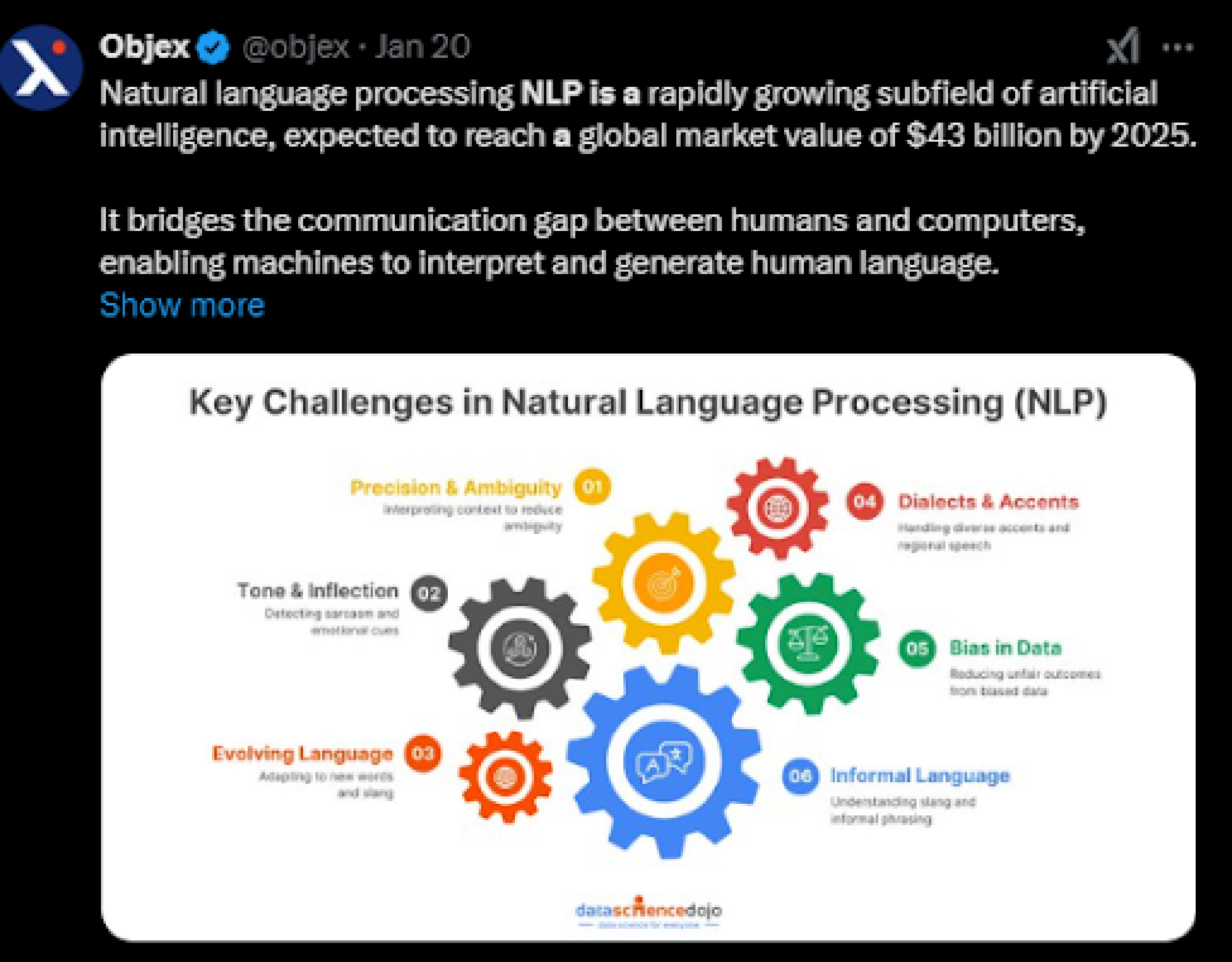
Quick Fact: The global NLP market size is expected to grow from $11.57 billion in 2023 to $43.91 billion by 2028, expanding at a CAGR of 30.7%.
Machine Learning (ML)
Machine Learning (ML) is the driving force behind continuous improvement and adaptation of agentic workflows. ML enables systems to learn from data patterns, optimize their responses, and evolve without explicit programming. By processing large datasets, ML algorithms can identify trends, make predictions, and improve the accuracy of automated decision-making processes.
For example, in customer support, ML can be used to analyze past interactions to predict the best responses or to automatically prioritize support tickets based on urgency and historical trends. This results in faster response times and enhanced service levels.
Real-World Example:
Amazon’s ML-driven recommendation system uses data from customer browsing behavior to suggest personalized products, generating over 35% of its total sales.
Quick Fact: 87% of companies that use machine learning report a positive impact on customer service quality.
Data Analytics
Data Analytics plays a pivotal role in informing AI and ML decision-making processes. It involves the systematic collection, processing, and analysis of data to uncover insights that drive intelligent actions. In the context of agentic workflows, data analytics ensures that the system is operating with real-time, actionable data, helping to optimize everything from customer interactions to process improvements.
Businesses generate an overwhelming amount of data, and without the proper analysis, much of it goes untapped. By leveraging data analytics in agentic workflows, organizations can make data-driven decisions that boost performance, enhance customer satisfaction, and identify opportunities for future innovation.
Real-World Example:
Netflix uses data analytics to understand viewer preferences and generate insights that power its recommendation engine, leading to higher customer engagement.
Quick Fact: According to IBM, 92% of enterprises believe that data analytics will be a key driver of business growth in the coming years.
The synergy of AI, NLP, ML, and Data Analytics is reshaping how businesses operate, especially in areas like customer support, sales, and operations. By adopting agentic workflows powered by these technologies, companies can deliver superior service, optimize their resources, and continuously evolve to meet customer needs. As organizations invest in these technologies, they position themselves to lead in an increasingly data-driven and competitive market.
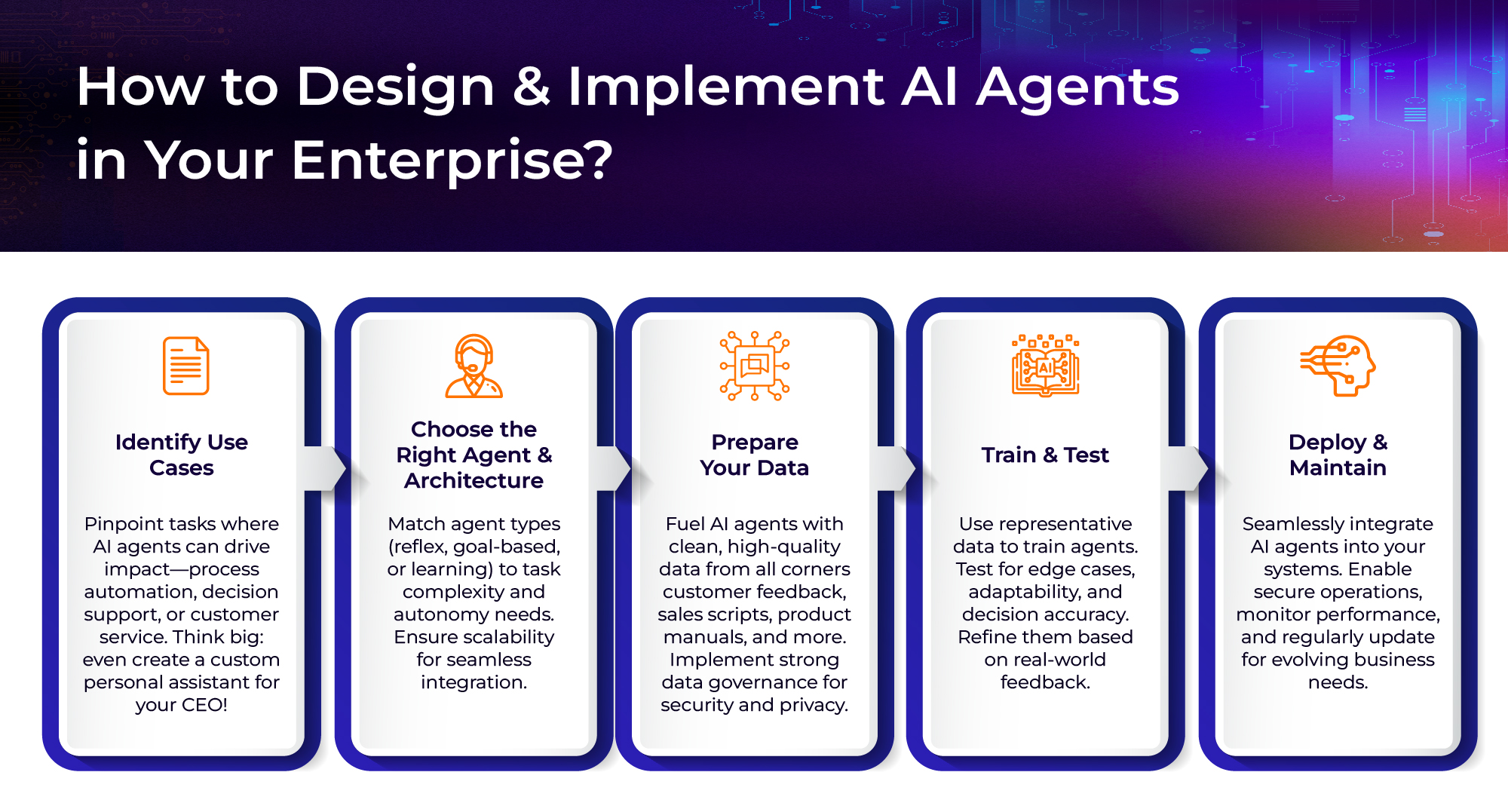
Why Not Embrace The Agentic Revolution?
AI agents and their architectures are no longer a futuristic concept—they are here, driving tangible business value across industries. For tech-savvy leaders in the C-suite, the time to act is now. By understanding and adopting Agentic AI, enterprises can:
- Enhance operational efficiency.
- Deliver exceptional customer experiences.
- Future-proof their organizations against competitive pressures.
Agentic AI isn’t just about automating tasks; it’s about empowering enterprises to think, decide, and act with unprecedented intelligence and agility. Ready to embrace the revolution? Start building your Agentic AI strategy today.
Frequently Asked Questions
1. What is an agentic workflow?
An agentic workflow is a dynamic, AI-driven process where intelligent agents autonomously execute tasks by analyzing data, understanding context, and making decisions in real time.
2. How does agentic architecture differ from traditional workflow systems?
Agentic architecture integrates AI, machine learning, and natural language processing to enable workflows that adapt and learn over time. Unlike traditional systems that rely on predefined rules, agentic architecture supports real-time decision-making and flexibility.
3. Why are agentic workflows important for enterprises?
Agentic workflows enhance operational efficiency by automating repetitive tasks, reducing response times, and enabling proactive customer support. They also empower organizations to scale operations seamlessly.
4. How do agentic workflows work?
Agentic workflows leverage AI agents that process real-time data, analyze patterns, and execute tasks autonomously. They use feedback loops to continuously improve decision-making and performance.
5. What industries can benefit from agentic workflows?
Industries like customer support, healthcare, retail, logistics, and finance can benefit from agentic workflows by improving efficiency and customer satisfaction.
6. Are agentic workflows secure?
Yes, agentic workflows incorporate advanced encryption, access controls, and compliance with data privacy regulations such as GDPR and CCPA to ensure data security.
7. Can agentic workflows be customized for specific business needs?
Yes, agentic workflows are highly customizable and can be tailored to suit the unique requirements of different industries and organizations.
8. How do agentic workflows handle errors or exceptions?
Agentic workflows are designed to identify and manage errors using AI. They either resolve the issue autonomously or escalate it to human agents when necessary.

